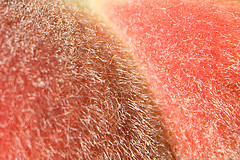Hirsutism
Hirsutism is defined as the excessive growth of terminal hair on the face and body of a female in a typical male pattern distribution. Hirsutism is a common clinical problem in women and the treatment depends on the cause of hirsutism. Untreated hirsutism can be associated with consi-derable loss of self-esteem and psychological morbidity.
The whole 24 pages article is available for download here.
Hyperandrogenemia is the key trigger for excess hair growth. Polycystic ovary syndrome and idiopathic hirsutism are the most common cause of hirsutism. As with all medical problems, investigation begins with a careful history, examination and then investigation directed at the possible cause. A raised serum testosterone level of > 150 mg/dl (5.2 nmol/l) should prompt further investigations to exclude an underlying androgen-secreting tumour. The treatment of hirsutism is most effective using combination therapy, including lifestyle therapies, androgen suppression, peripheral androgen blockage and cosmetic treatments. Women should be warned not to expect improvement or at least 3-6 months after therapy is begun and lifelong therapy may be needed to prevent recurrence. The current review discusses definition, pathogenesis, differential diagnosis, diagnostic strategies, management, guidelines and the authors' recommendations about hirsutism.
Definition
The individual woman's definition of hirsutism may differ depending upon her ethnic back-ground and upon her interpretation of normal. Hair growth varies widely among women, and dis-tinguishing normal variations of hair growth from hirsutism is important. Most Asian and Na-tive American women have little body hair, while Mediterranean women on average have mod-erately heavy body hair. Hirsutism is the development of androgen-dependent terminal body hair in a woman in places in which terminal hair is normally not found. Terminal body hairs are normally seen in men on the face, chest, abdomen and back, and which are not normal in wom-en. Hirsutism is a common disorder and usually of benign a etiology affecting between 5% and 10% of women of reproductive age in the general population. The presence of hirsutism is ex-tremely distressing to patients, with a significant negative impact on their psychosocial develop-ment; 70-80% of hirsute patients have hyperandrogenism conditions such as polycystic ovary syndrome and androgen-secreting tumours rather than an isolated disorder.
Pathogenesis
Before puberty, hair is vellus (small, straight, fair and non-pigmented), and the sebaceous glands in androgen- sensitive follicles are small. Sex steroids and a number of local and systemic factors can act directly and indirectly on the dermal papilla to regulate hair growth. In response to the increased levels of androgens at puberty, vellus follicles in specific areas develop into terminal hairs (larger, curlier and darker, hence more visible). Androgens increase hair follicle size, hair fibre diameter, the proportion of time terminal hairs spend in the anagen (growth) phase and sebum secretion. Therefore, not only do androgens alter the type of hair present, they will in-crease the oiliness of skin and hair. Androgen excess in women leads to increased hair growth in most androgen- sensitive sites, but will manifest with loss of hair in the scalp region, in part by reducing the time scalp hairs spend in anagen phase. In other areas (e.g. the forehead and cheeks), the increased androgen levels dramatically increase the size of the sebaceous glands, but the hair remains vellus. Hirsutism is a sign of increased androgen action on hair follicles, from increased circulating levels of androgens (endogenous or exogenous) or increased sensitivity of hair follicles to normal levels of circulating androgens. The severity of the hirsutism does not correlate well with the level of androgen, because the response of the androgen-dependent fol-licle to androgen excess varies considerably within and among persons. The term idiopathic hirsutism has been used to describe the circumstance in which hirsutism is present with circulat-ing androgen levels within the normal range. Nearly all hirsute women have an increased in an-drogens, usually testosterone, but the increase may not be sufficient to raise the serum total tes-tosterone concentration above the normal range because the carrier protein for testosterone, sex hormone-binding globulin, is suppressed when androgen production is increased. In the remain-ing women, the hirsutism may be due to increased conversion of testosterone to dihydrotestoste-rone by the enzyme 5a-reductase in peripheral tissue, including hair follicles which this metabolite is the more potent of testosterone. Thus, elevated 5a-reductase activity has been demon-strated in the hair follicles of women with idiopathic hirsutism, and excess hair growth is likely to be due to an exaggerated response of the hair follicle to normal androgen levels. Nearly all circulating testosterone is bound to sex hormonebinding globulin and albumin, with free testoste-rone being the most biologically active form. Several different androgens may be secreted in excess. Testosterone excess is usually of ovarian origin while dehydroepiandrosterone sulphate excess is of adrenal origin and androstenedione excess can be of either adrenal or ovarian origin. Although, dehydroepiandrosterone and dehydroepiandrosterone sulphate are general markers of adrenal androgen production, they have little if any intrinsic androgenic activity. Small amounts are converted to androstenedione and then to testosterone in both the adrenal glands and peri-pheral tissues, including hair follicles and external genitalia.
The whole 24 pages article is available for download here.

